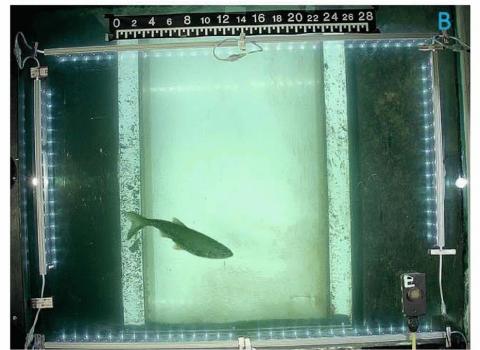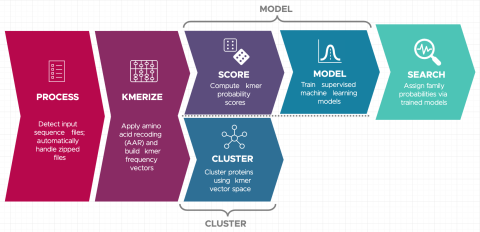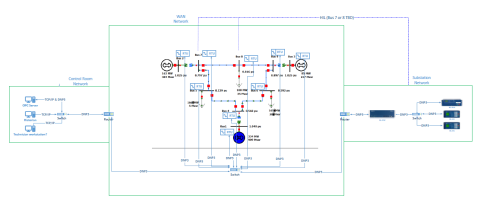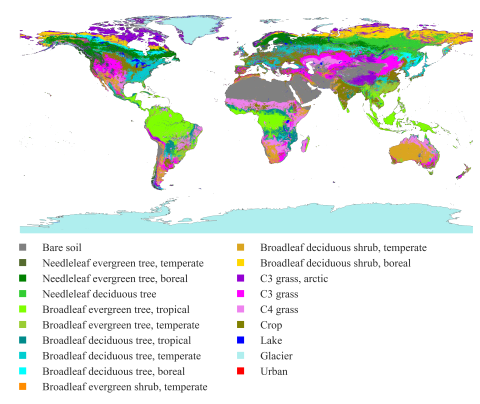Recent studies have shown that reducing the precision of floating‐point calculations in an atmospheric model can improve the model's computational performance without affecting model fidelity, but code changes are needed to accommodate lower precision or to prevent undue round‐off error. For complex...
Filter results
Category
- (-) Computational Research (12)
- (-) Coastal Science (3)
- (-) Distribution (2)
- Scientific Discovery (225)
- Biology (139)
- Earth System Science (108)
- Human Health (81)
- Integrative Omics (53)
- Microbiome Science (23)
- National Security (15)
- Computing & Analytics (10)
- Energy Resiliency (7)
- Visual Analytics (6)
- Materials Science (5)
- Atmospheric Science (4)
- Chemical & Biological Signatures Science (3)
- Computational Mathematics & Statistics (3)
- Data Analytics & Machine Learning (3)
- Data Analytics & Machine Learning (3)
- Renewable Energy (3)
- Weapons of Mass Effect (3)
- Chemistry (2)
- Cybersecurity (2)
- Ecosystem Science (2)
- Electric Grid Modernization (2)
- Grid Cybersecurity (2)
- Plant Science (2)
- Bioenergy Technologies (1)
- Computational Mathematics & Statistics (1)
- Energy Efficiency (1)
- Energy Storage (1)
- Grid Analytics (1)
- High-Performance Computing (1)
- Solar Energy (1)
- Subsurface Science (1)
- Terrestrial Aquatics (1)
- Transportation (1)
- Wind Energy (1)
Publication Type
Software Type
Tags
- Cybersecurity (2)
- DNA Sequence Analysis (2)
- Electrical energy (2)
- Functional Annotation Analysis (2)
- Kmers (2)
- Machine Learning (2)
- Python (2)
- RNA Sequence Analysis (2)
- Snakemake (2)
- Software Data Analysis (2)
- Type 1 Diabetes (2)
- Alternative Splicing (1)
- Autoimmunity (1)
- Fish Detection (1)
- High-Performance Computing (1)
- Hydropower (1)
- Marine and Hydrokinetic (1)
- Mass Spectrometry (1)
- Omics (1)
- Predictive Modeling (1)
- Statistics (1)
- underwater video (1)
Category
Category
Christine H Chang, William C Nelson, Abby Jerger, Aaron T Wright, Robert G Egbert, Jason E McDermott, Snekmer: a scalable pipeline for protein sequence fingerprinting based on amino acid recoding, Bioinformatics Advances , Volume 3, Issue 1, 2023, vbad005, https://doi.org/10.1093/bioadv/vbad005...
pmartR Software Overview The pmartR package provides a single software tool for QC (filtering and normalization), exploratory data analysis (EDA), and statistical analysis (robust to missing data) and includes numerous visualization capabilities of mass spectrometry (MS) omics data (proteomic...
Last updated on 2023-02-23T19:37:46+00:00 by LN Anderson Snekmer: A scalable pipeline for protein sequence fingerprinting using amino acid recoding (AAR) Snekmer is a software package designed to reduce the representation of protein sequences by combining amino acid reduction (AAR) with the kmer...
Category
The year 2014 solution files are based on model calibration effort based on inputs and data from Year 2014 as described in Khangaonkar et al. 2018). It includes water surface elevation, currents, temperature and salinity at an hourly interval. These netcdf files with 24 hourly records include...
Category
The year 2014 solution files are based on model calibration effort based on inputs and data from Year 2014 as described in Khangaonkar et al. 2018). It includes water surface elevation, currents, temperature and salinity at an hourly interval. These netcdf files with 24 hourly records include...
Category
This dataset includes the results of high-fidelity, hardware in the loop experimentation on simulated models of representative electric and natural gas distribution systems with real cyber attack test cases. Such datasets are extremely important not only in understanding the system behavior during...
This dataset includes one baseline and three cybersecurity based scenarios utilizing the IEEE 9 Bus Model. This instantiation of the IEEE 9 model was built utilizing the OpalRT Simulator ePhasorsim module, with Bus 7 represented by hardware in the loop (HiL). The HiL was represented by two SEL351s...
ProxyTSPRD profiles are collected using NVIDIA Nsight Systems version 2020.3.2.6-87e152c and capture computational patterns from training deep learning-based time-series proxy-applications on four different levels: models (Long short-term Memory and Convolutional Neural Network), DL frameworks...
Inclusion levels of alternative splicing (AS) events of five different varieties (i.e. skipped exon (SE), retained intron (RI), alternative 5’ splice site (A5SS), alternative 3’ splice site (A3SS), and mutually exclusive exons (MXE)) were measured in human blood samples from two separate cohorts of...
This dataset presents land surface parameters designed explicitly for global kilometer-scale Earth system modeling and has significant implications for enhancing our understanding of water, carbon, and energy cycles in the context of global change. Specifically, it includes four categories of...
A total of 172 children from the DAISY study with multiple plasma samples collected over time, with up to 23 years of follow-up, were characterized via proteomics analysis. Of the children there were 40 controls and 132 cases. All 132 cases had measurements across time relative to IA. Sampling was...











